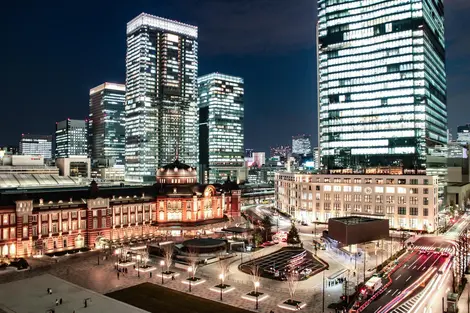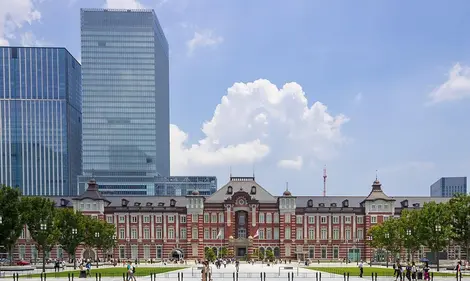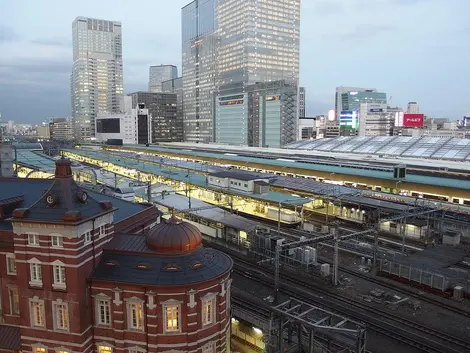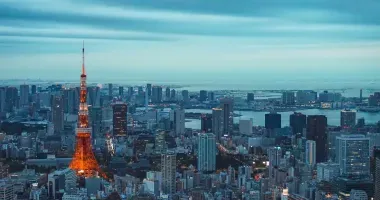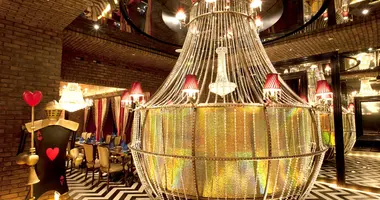Tokyo Station 東京駅
- Published on : 18/04/2024
- by : Antoine Legastelois /J.R.
- Youtube
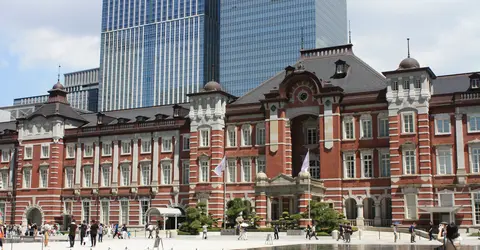
@Wikimedia
Historic Tokyo building from the early 20th century
More than a hub, Tokyo station is rich with history surpassing its existence for over a century. The station serves an average of half a million people each day, making it one of the busiest stations in the world!
Tokyo station, a key hub for the capital city of Japan
Tokyo Station is located in the busy Marunouchi business district in the Chiyoda district, in the heart of the Japanese capital. It is located between the Imperial Palace to the west and the Ginza district to the east. More than a station, it is a place that has bared witness to the evolution of the country for over a century!
Less frequented than Shinjuku Station (the first in the world in terms of attendance, at a rate of 3.5 million passengers per day), it nevertheless welcomes no less than 900,000 daily user, much more than the Gare du Nord in Paris, the first station in Europe, or major stations like Union Station in New York. Tokyo station, or Tokyo-eki , consists of 10 platforms giving access to 20 platforms. To this, add the famous Shinkansen circulating on 5 dedicated platforms, in the eastern part of the station. This is also where the Shinkansen terminal in Tokyo is located. Tokyo Station is the terminus for many Shinkansen lines throughout Japan, including the Tokaido Shinkansen, the Tohoku Shinkansen, and the Hokuriku Shinkansen. From Tokyo Station, travelers can go out to destinations such as Kyoto, Osaka, Nagoya, Hiroshima, Odawara (near Hakone), Nagano, and Kanazawa. These trains are accessible via train tickets, the National Japan Rail Pass, or regional rail passes!
Note the presence of an incredible underground network in this place. In this veritable labyrinth, there are all kinds of shops, supermarkets and restaurants, as is common in railway stations in Japan, places of city life. The complex is called " Tokyo Station City ", and includes two areas very popular with tourists: first the "Tokyo Character Street", which brings together typically Japanese stores such as the Pokemon Store, Hello Kitty stores, Lego, and even Snoopy. The second area will appeal to gourmets: it is 'Tokyo Ramen Street', where there are restaurants and take-out food stalls.
- Read also: Pop culture in Japan
But this underground pedestrian gallery , which is counted in tens of kilometers, allows you to reach neighboring stations without confronting the inextricable urban jungle that exists on the surface in this district, ideal during extreme weather conditions and rainy days! Tired of trains? The station also has a huge bus station, which notably accommodates night buses to reach the major cities around the country.
But what makes the reputation of Tokyo station the most is its western facade . Designed by the Japanese architect Tatsuno Kingo, western-style, built in brick, with domes and sloping roofs, similar to the impressive Amsterdam Central Station.
The tumultuous history of Tokyo station
In 1896, the Diet (parliament) authorized the creation of a station called " Chuo Teishajo". This will be located in front of the gardens of the Imperial Palace and will become the main station of the new railway line connecting Tokyo to the southwest of the country. But events occur and disturb the project: the first Sino-Japanese war (1894-1895), then the war against Russia (1904-1905) push back the project. It was not until 1908 that the work finally began. Tokyo Station will finally open its doors 6 years later, on December 20, 1914 .
- Read also : History of Japan, simplified chronology
At the time, it was called "central station" and only had four platforms! Two for electric cars, and two more for diesel and steam. In 1923, Tokyo station survived the great Kanto earthquake which killed more than 100,000 people. Furthermore, In 1945, the station was badly damaged by Allied bombings. Rebuilt in a year, the roofs, formerly beautiful cupolas, were replaced by a simpler angled structure. And the station lost a floor.
A stylish renovation for the station
In the 1980s, a project to replace its sublime facade was initiated but quickly abandoned given the opposition movements that had emerged at the time. Instead, a project to preserve and renovate the historic monument was launched. It was in 2007 that the renovation of the station began and was completed in 2012. Upon completion, the station regained its former splendor, as well as its third level and its domes.
Prestigious station whose surname is identical to the capital of the country, Tokyo-eki is not limited to a vast railway hub, it is a legend that survived an earthquake, bombings, and witnessed two world wars, two Olympic Games, and the launch of the first high-speed trains in the world!
How To Get To Tokyo Station? Access And Practical Information
Tokyo station is served by metro lines but also by the Japanese TGV and local trains.
- Shinkansen: Tokaido Shinkansen, Tohoku Shinkansen, Yamagata Shinkansen, Akita Shinkansen, Joetsu Shinkansen, Hokuriku Shinkansen and Hokkaido Shinkansen
- Tokaido Main Line, Ueno-Tokyo Line, Keihin-Tohoku Line, Yamanote Circular Subway Line, Chuo Line, Sobu Line, Narita Express Train Line, Yokosuka Line, Keiyo Line, and Marunouchi metro station
Address: 1 Chome Marunouchi, Chiyoda City, 100-0005 Tokyo
Discover the Yamanote , Tokyo's iconic circular metro line.



